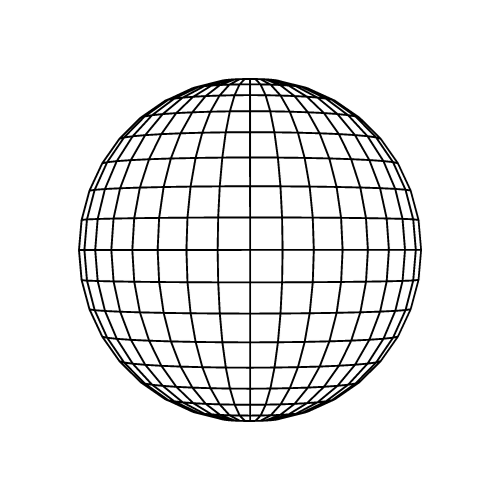Introduction to Curved Solids
Classification of Curved Solids
- Convex Solids
- Solids where any line segment connecting two points within the solid lies entirely within the solid. Examples include spheres, cones, and cylinders.
- Non-Convex Solids
- Solids where some line segments connecting internal points may lie partially outside the solid. Examples include tori and concave polyhedra.
Fundamental Theorems
- Pappus's Centroid Theorem
- States that the volume of a solid of revolution equals the product of the generating figure's area and its centroid's rotational path length.
- Cavalieri's Principle
- If two solids have equal heights and equal cross-sectional areas at every height, their volumes are equal.
Spherical Geometry Properties
- Parallel Lines: Non-existent in spherical geometry
- Triangle Angles: Sum exceeds 180 degrees
- Area Calculation: Proportional to excess angle
Sphere
A perfectly symmetrical solid where all surface points are equidistant from the center.

Key Formulas
- Surface Area
- Volume
- Diameter
Properties
- Equal distance from center to all surface points
- Minimal surface area for given volume
- Infinite lines of symmetry
- Optimal volume-to-surface-area ratio
Real-World Applications
- Celestial Bodies: Gravitational forces create approximately spherical planets
- Liquid Droplets: Surface tension forms spherical shapes
- Pressure Vessels: Spherical tanks for optimal pressure distribution
Cone
A solid formed by connecting all points of a flat base to a single vertex point.
Essential Formulas
- Lateral Surface Area
- Total Surface Area
- Volume
- Slant Height
Cone Frustum
A cone section formed by parallel cuts to the base.
Cylinder
A solid with parallel, congruent bases connected by a curved surface.

Core Formulas
- Surface Area
- Lateral Surface Area
- Volume
Types of Cylinders
- Right Circular Cylinder
- Circular base with perpendicular axis
- Elliptical Cylinder
- Elliptical base with volume formula:
Applications
- Engineering: Pipes, columns, storage tanks
- Optics: Cylindrical lenses for astigmatism correction
- Architecture: Structural supports and decorative elements